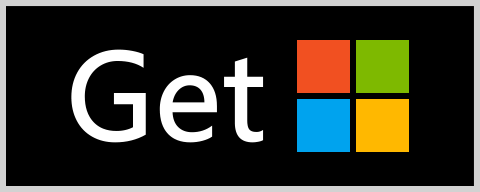
Welcome to QUno, an Uno-like card game.
A long time ago, in a galaxy not far away, I (mostly) taught myself to program while in college. I didn't care much for algorithms and data structures, but once I learned that I could make a window appear on the screen and have it do stuff like the other programs I was using, I was hooked. My sister loved to play Uno, and I missed playing with her when I went away to college. I also knew that when I started my adult life I would likely not be in my hometown where she lived, so there wouldn't be as many chances to play in the future. So, I decided to use my newfound programming skills to make a computer game so she could play Uno even if I wasn't there.
Prehistory: Versions 1, 2, and 3
Version 1 of this game was built circa 1996 and it ran on Microsoft Windows 3.1. I used Microsoft Visual C++ 1.52c. It sort of worked, but not really, because I didn't know what I was doing and the game would leak GDI resources until the system was exhausted. Programming for 16-bit operating systems was unforgiving; I had to create device contexts uphill both ways. I also had to target Windows 3.1 because I used the game as the final project in a C++ class I took, and I was the only student who wanted to build a graphical program, and the instructor wasn't quite sure what do (everyone else was using gcc and Unix) so he let submit it because he had on Windows 3.1 computer from the lab in his office.
Version 2 of this followed shortly after, circa 1997, and this version was just for me, so I targeted Microsoft Windows 95 and I used Microsoft Visual C++ 2.0. It was designed in the same style as the 16-bit version but updated for 32-bit and taking advantage of some things I learned along the way. This one worked much better! You could play a few games, but it still crashed every now and then. I worked on it nights and weekends during my summer internship; I think my roommate Dave wanted me to be more social that summer, and maybe I would have been if Dave was more fun.
Version 3 happened circa 1999. I was now a professional programmer, and my employer sent me to training to learn COM and ATL, so of course I used my new knowledge to rearchitect this game. I used Microsoft Visual C++ 6.0 and targeted the truly 32-bit operating systems of the time, such as Microsoft Windows 2000. This version was the first one to separate the game "engine" (essentially a data model and some game logic) from the user interface, and that is a pattern that continues to this day. The engine worked rather well--I implemented a Visual Basic test harness to drive the engine, and a simple HTML-based UI (remember when it was totally cool and no one saw any potential problems with calling native code from scripts in a web page?), but I never finished the UI I planned. This too would be a pattern that would continue for some time.
The code for the above has been published at QUnoArchives.
The Lost Years: Version 4
Fast forward n years. .NET now rules the Microsoft ecosystem. Windows Vista is a punchline, but with it comes Windows Presentation Foundation, which is a remarkably powerful and flexible user interface framework, that leapfrogs several generations of Windows UI technologies such as Win32, MFC, and Windows Forms. SourceForge is pioneering open-source development, and Microsoft copycats with CodePlex (RIP). The time has come for QUno to make it off my hard drive (an actual spinning metal disk, remember those?) and onto the cloud. (Was it The Cloud then? I can't remember.) So I start to build a .NET-based version of QUno, using C# with a user interface built using Windows Presentation Foundation. This is version 4.
Version 4 is a saga that lasts more than 10 years but less than 15. I build a solid game engine, which is still mostly in use today. On top that engine, I build a console application as a test harness; this is the first time you can QUno from a command prompt! (This console application will play a key role in the rebirth of QUno many years later.) I also build a UI based on WPF, and experiment with unit tests and XAML and M-V-VM and Expression Blend and many other fads of the day. At some point I get it sort of working with this new architecture, but I lose interest.
Until: Microsoft Build 2012, when Microsoft Windows 8 is introduced. This is the first version of Windows that includes the Windows Runtime, and the promise of building Windows applications to run on desktops and laptops and phones and tablets is exciting. And part of this power comes from XAML, which is now built into the Windows Runtime, and something I have some experience with. So I start refreshing the Windows Presentation Foundation version of QUno to use the modern Windows Runtime and target Windows 8 as well as Windows Phone (RIP). I get a good start, but over time I realize that the XAML platform in the Windows Runtime (and on the Phone) isn't exactly the same as the XAML I am used in WPF, so I hit many frustrations, and I lose interest.
With the death of CodePlex, I move the QUno code to "Visual Studio Online" which then turns into "Azure DevOps". Version 4 of QUno, including the projects for Windows Phone and Windows 8 "Metro", is still frozen in Carbonite there.
The Modern Era: Version 5
Fast forward a few more years, and now .NET is a cross-platform framework, in the form of .NET Core. It can run on Macs! It can run on Linux! (I know I know Mono has been around forever "running .NET on Linux" but come on...) So I decide to see how hard it would be to refresh the QUno command line application and class library for .NET Core so I can run it on my Mac. Turns out not hard! Like, at all. Bascially just a recompile. Oh and F# is available you say? Oh and now we have moved on from the disaster of Windows 8 and Windows 10 is actually pretty good again? Maybe my interest isn't dead just yet.
- The game engine has been reimplemented for .NET 5.
- There are two desktop applications, for Windows Forms and Windows Presentation Foundation, using the open source versions of those frameworks.
- There is a new implementation for Windows 10 and the Universal Windows Platform.
Aside from professional work, I had never published an app to any "app store" so I decided it was time, and I am pleased to say that, more than 20 years after the first line code was written, QUno is available in the Microsoft Store.
For documentation and support, visit the GitHub repository for this project.
What's Next
I'm not concerned if anyone every downloads it, or what the rating is (but if you do choose to rate it, please be kind, I tried to be straight with what you are getting). I've worked on this most of my adult life to keep my mind sharp and to remember my sister.
The journey of QUno will continue with new native implementations.
© 2021 Roger Deetz. All rights reserved. • Privacy Policy
